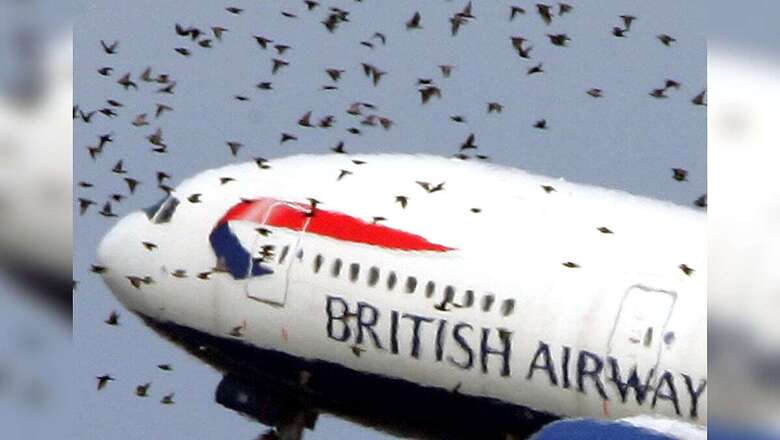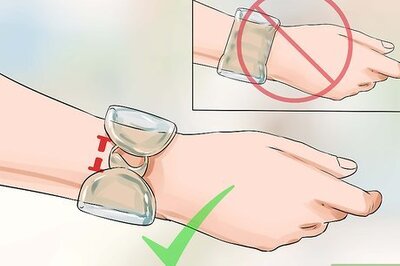
views
The ability to take to the skies still has to be one of the greatest achievements of humans. But who would have thought that our feathery peers who birthed the idea of marvellous engineering would be the prime threat when it comes to flying. Bird strikes, till date, ranks among the most potent threat for aviation around the world. The infamous engine failure of the US Airways flight, which had to land on the Hudson river was a witness to the same after 2 geese managed to damage two engines of the aircraft.
Dangers of Bird Strikes
A survey held by ICAO including data from 91 countries found out that airlines face an average of 34 bird strikes in a day. The damage, if translated to money amounts to more than $1 Billion annually. However, a relieving fact is that almost 92 percent of the air strikes are without any damage.
Most of the modern engines are required to be capable of ingesting birds that weigh about 1.8-kilo while running at full power. They are required to do it within the initial climb speed without catching fire or making the engine impossible to shut down. In addition to this, it is also required to operate at atleast 50 percent power for upto 14 minutes after the strike. This means that even if both the engines are hit by large birds, it can provide a combined thrust output of at least one engine which is more than enough to return to the airport.
Avoiding a Bird Strike
What Planes do to Avoid Bird Strikes?
Now there are a couple of solutions that might seem obvious. A mesh, for instance, sounds like the cheapest solution against the bird strike problem. However, a mesh at the intake end also poses a major risk. At high velocity, a 1.8-kilo bird hitting the intake amounts to 3,50,000N which would damage the mesh and pose a greater risk of entering the engine.
Among the solutions that worked against the bird strike problem was a study from Perdue University which found out that planes painted in dark colours attract more birds, and hence increasing the chances of a bird strike. The contrasting brighter shade fuselages blend with the sky and help the bird avoid the plane.
Adding to the list of solutions is also a study that was held by Japanese carrier ANA which found out that planes with eyes drawn at the jet engine spinners could be an efficient way to scare off birds. For this purpose, 26 of the Boeing aircraft in the carrier’s fleet carried patterns on the engine. Surprisingly, the method worked. A plane with the pattern reported just one bird strike as against the 9 which hit the conventional one in the same time period.
What Airports do to Avoid Bird Strikes?
The location of the Airport also plays a huge role in the number of birds that pose danger on the runway. For instance, we can take into account the contrasting number of bird strikes that happens at Munich Airport which is way more than the number of incidents at London Airport. The key driving factor that differentiates the two is the location. Munich airport which is located in a fairly larger land attracts more birds. Meanwhile, the London airport which is surrounded by skyscrapers poses a little problem in the same regard.
Speaking of the location, food sources near airport can also be a major contributing factor in the number of bird strikes. The crash landing of a Ural Airline Airbus flight into a cornfield in Moscow was attributed to a bird strike. However, soon the blame was shifted to an illegal garbage dump that was located at the outskirts of the airport that attracted more birds. So, any method that would discourage an optimal environment for birds to breed and feed would be an efficient way to reduce the number of bird strikes. For instance, the grass in and around an airport cannot be too short which will attract more birds. However, the grass shouldn’t be too long as well as it might attract insects which would in turn attract smaller birds.
Also Watch:
Another attractive factor for birds are airport reservoirs. That can be covered with a net to keep the birds away. In addition to this there are also a couple of methods how one can keep the birds away. A lot of airport deploy methods like a decoy drone that resembles a predator or a sound that imitates it. Other methods also includes pointing lasers and firing flares to keep the birds out.
Read all the Latest News, Breaking News and Coronavirus News here. Follow us on Facebook, Twitter and Telegram.



















Comments
0 comment